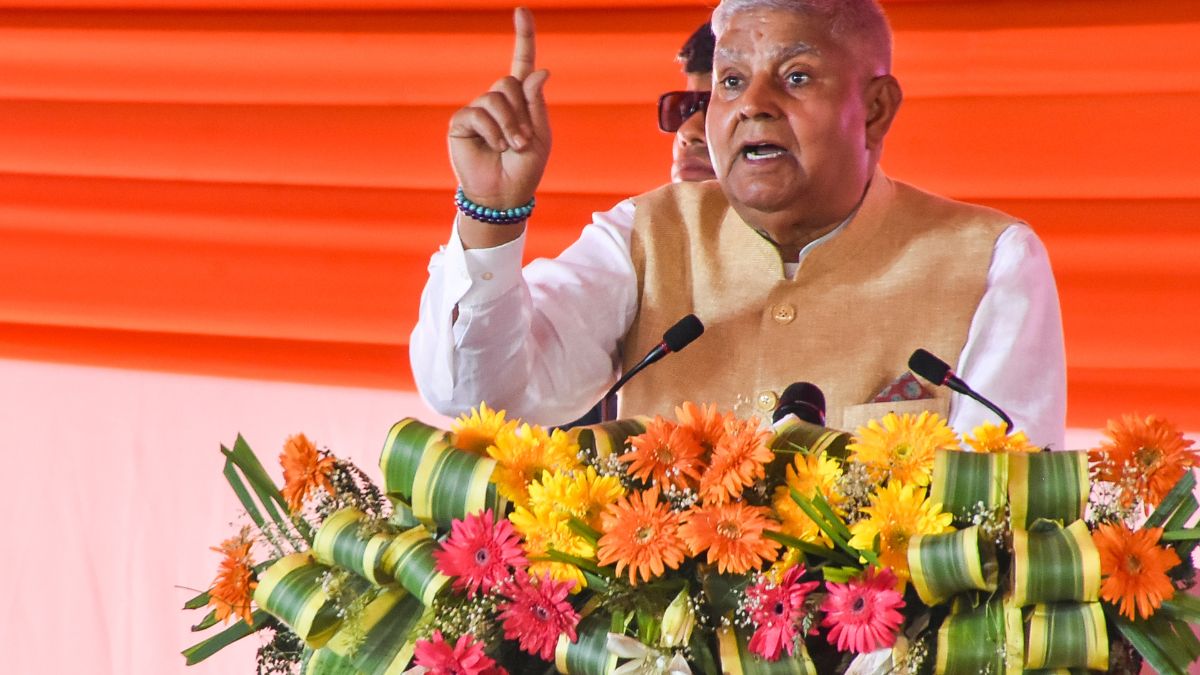Jagdeep Dhankhar’s resignation as the vice president has sent shockwaves across India. The sudden move came late Monday (July 21) evening, two years before his tenure was to end.
Dhankhar, 74, said in his letter to President Droupadi Murmu that he was exiting his post with immediate effect to “prioritise health care”. He said he was stepping down in “accordance with Article 67(a) of the Constitution.”
This is a rare moment that the post of vice president has become vacant before the end of the term. The five-year tenure of Dhankhar, who assumed office in August 2022, was set to conclude in August 2027.
What will happen now as VP post becomes vacant? We will explain.
Dhankhar’s resignation sparks buzz
Vice President Jagdeep Dhankhar’s resignation came on the first day of the Monsoon Session.
The Vice President of India is also the ex-officio Chairman of the Rajya Sabha. Earlier on Monday, Dhankhar had urged the members of the Upper House across party lines to tone down acrimony.
“While political parties may pursue the same goals through different approaches, no one in India opposes the nation’s interests… Dialogue and discussion, not conflict, are the way forward.”
In his resignation letter to Murmu, Dhankhar thanked the President for her “unwavering support” and the “soothing, wonderful working relationship” they shared. He also praised Prime Minister Narendra Modi and the Union Council of Ministers for their “invaluable support."
Impact Shorts
More Shorts“The warmth, trust, and affection I have received from all the Hon’ble Members of Parliament would ever be cherished at and embedded in my memory,” Dhankhar wrote.
In a post on X today, PM Modi wished the VP “good health”.
The Home Ministry has also notified the resignation of Dhankhar.
Commenting on the resignation and the next VP, a BJP leader told PTI: “We are still processing it. But I believe the party will choose someone who is a solid choice and is non-controversial.”
The Congress has raised questions on Dhankhar’s surprise resignation. Congress Rajya Sabha MP Jairam Ramesh said Dhankhar’s resignation “speaks highly of him”. “It also speaks poorly of those who had got him elected as Vice President in the first instance,” he posted on X.
Ramesh said that “in a truly unprecedented move, Shri Jagdeep Dhankar has resigned”. “He has given health reasons for doing so. Those should be respected. But it is also a fact that there are far deeper reasons for his resignation," the Congress leader claimed.
Who will chair Rajya Sabha?
As Dhankhar resigned with immediate effect, Rajya Sabha Deputy Chairman Harivansh Narayan Singh, a Janata Dal (United) MP, chaired the proceedings of the morning session on Tuesday (July 22).
The Indian Constitution does not mention an acting Vice-President. So, until Dhankhar’s successor is elected, Deputy Chairman of the Rajya Sabha will chair the House’s proceedings.
How is India’s Vice President picked?
Dhankhar ’s exit has sparked speculations about who will be the next vice president.
If the post of President is vacant, the Constitution says it should be filled within six months. However, no such deadline is fixed for the vacancy of Vice President, India’s second-highest constitutional office after President.
According to the rules, the polls have to be held “as soon as possible” to fill the vice-presidential vacancy. The elections for the VP are governed by Articles 63 to 71 of the Constitution and the Vice-President (Election) Rules, 1974.
The Election Commission will begin the process to elect the new VP.
As per Article 66, the Vice President is elected by an “electoral college” comprising members from both Houses of Parliament — the Lok Sabha and the Rajya Sabha.
Voting is held in Delhi’s Parliament House by secret ballot, deploying a “system of proportional representation by means of the single transferable vote.”
To be eligible for the post, the candidate should be a citizen of India who is at least 35 years old; and qualified for election as a member of the Council of States.
“A person shall not be eligible for election as Vice-President if he holds any office of profit under the Government of India or the Government of any State or under any local or other authority subject to the control of any of the said Governments,” Article 66 states.
To elect a VP, the Members of Parliament (MPs) rank candidates in order of preference, with each vote carrying equal weightage.
To win, the candidate must reach a required minimum number of votes, called the quota. In case no candidate reaches the quota, those with the fewest first-preference votes are eliminated.
The votes of the eliminated candidates are transferred to the remaining contenders based on second preferences. The process goes on until one candidate touches the quota and is declared the Vice President.
The role of VPs
As the ex-officio Chairman of the Rajya Sabha, the VP maintains order and presides over the Upper House. The vice president can also become ‘acting President’ if the sitting President resigns, or in case of their death or removal.
The VP discharges the functions of the President until a new person is elected to the post.
With inputs from agencies
)